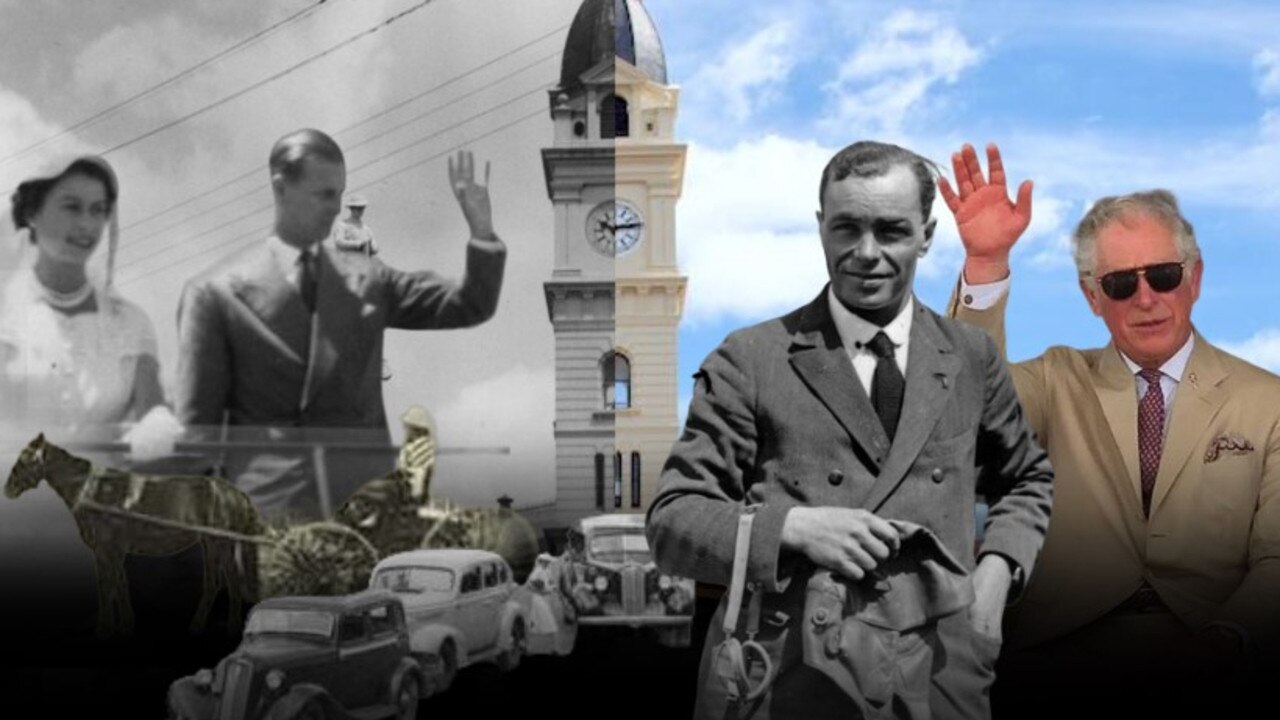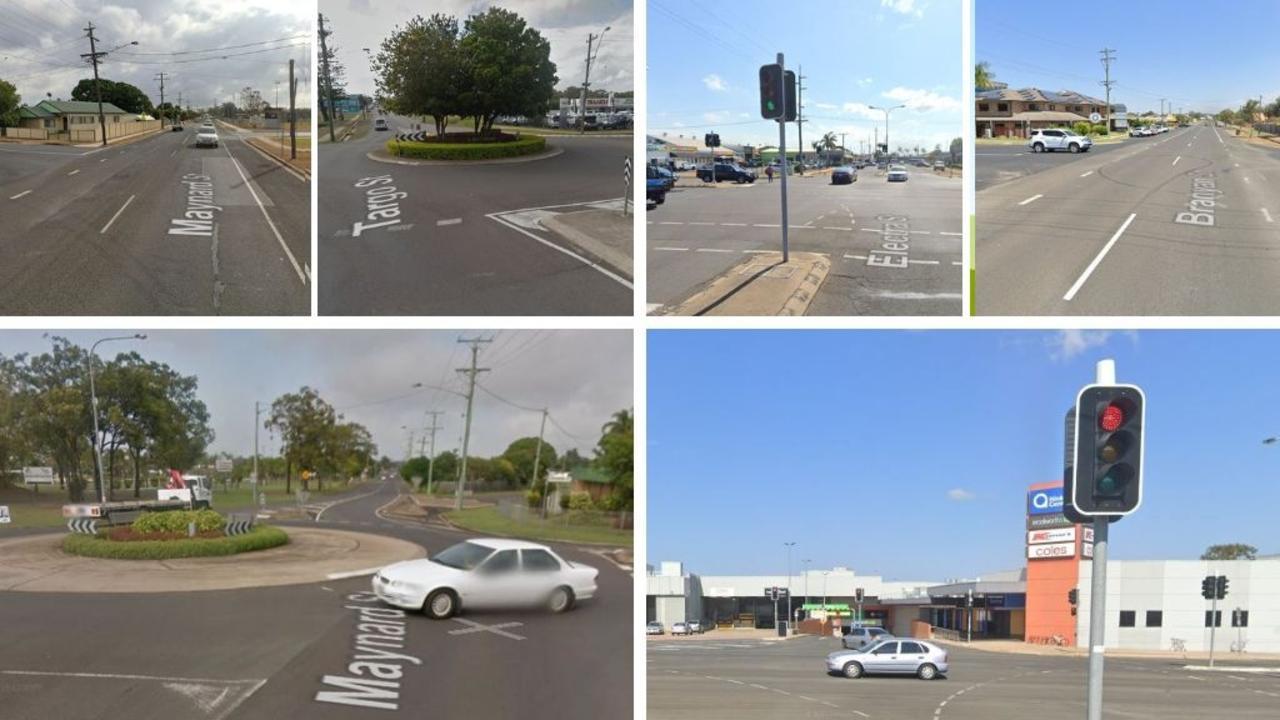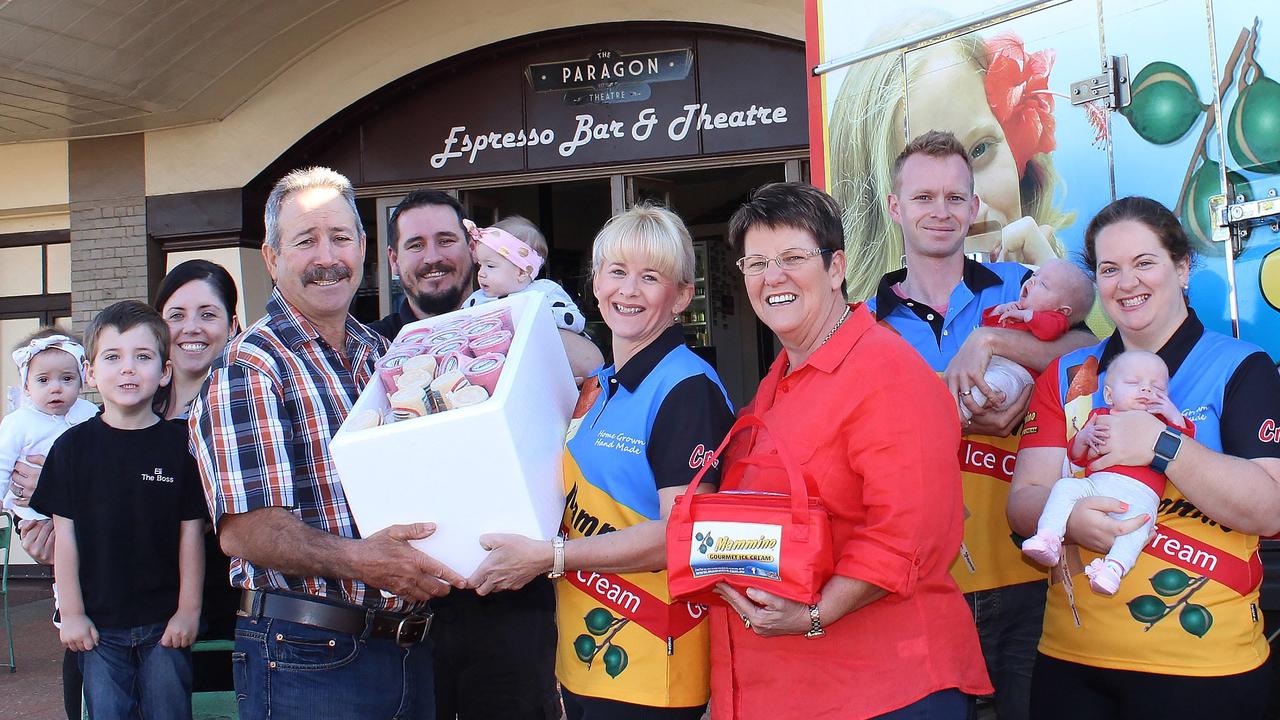The changing face of Bundaberg over the decades | Photos
From raging infernos to devastating floods and Royal visits, Bundaberg has witnessed much in its almost 150-year history. See how much some things have changed, while others have remained the same in these amazing interactive sliders:

Community News
Don't miss out on the headlines from Community News. Followed categories will be added to My News.
From fateful fires, to devastating floods, to visits from travelling royalty, Bundaberg has witnessed much in its almost 150 year history.
The town of Bundaberg was officially established in 1881, a few decades after settlers John and Gavin Stewart obtained forest land in the region to supply timber to the growing pastoral industry in the 1850s.
It has changed drastically over the centuries, but eagle eyed onlookers in places such as Bourbong Street and the Botanical Gardens can spy the legacy of its history.
Take a moment to step back in time with our image slider gallery comparing Bundaberg’s history with its present.
Around town
Many of Bundaberg’s first pubs, hotels and watering holes have remained within the city centre, and while their facades may have changed alongside their owners, pieces of architectural history remain.
Bourbong Street, Bundaberg’s city centre, has certainly evolved over the centuries, from horse and carts traversing the streets to the country's first motor cars.
Some of Bundaberg’s iconic architectural structures, such as the Post Office and the School of the Arts have remained largely unchanged over the decades, as time marches on around them.
Some buildings, while still structurally the same, have had to change with the times.
Since those early days in the late 1800s, the population of Bundaberg has boomed, with streets filling with houses, roads and a growing population.
Officially opened as the Hinkler Airport in 1931, the now Bundaberg Airport played its own vital role in the country’s military history.
During the Second World War, the airport became a Royal Australian Air Force base for the Empire Air Training Scheme.
The Bundaberg Base Hospital (now simply known as the Bundaberg Hospital) was opened in 1914, by the then Governor of Queensland Sir William MacGregor.
Little remains of that original structure, with the current hospital boasting features such as a helicopter landing pad, technology not dreamt of in the early 1900s.
Everyday Life:
The day-to-day of Bundaberg locals, while shaped by the technologies of our time remains largely unchanged.
Groceries still need to be purchased, children need to be sent to school, many still attend church, and the movies remains a popular place to spend a Friday night.
Many of the churches in Bundaberg have remained the same since the day they were built, while the religious groups using them may have changed over the years.
Many Bundaberg locals have also enjoyed a quiet afternoon overlooking the town from the Hummock Lookout, watching the sun set over the ocean and farm land.
Going to the movies is still a fun thing to do, with popular snacks remaining the same.
Additions of air-conditioning, leather seats and better lighting have only made this pastime more enjoyable.
Bundaberg Central State School is the oldest school in Bundaberg, first established in 1875, before the township was made official.
The schoolhouse, built in 1890, was added to the Queensland Heritage Register in 2014.
Many icons of the region have been shuttered in favour of the future, including the Anzac Pool, formerly the Memorial Baths, established by the RSL in 1923.
Where once was a thriving public space, is now a patch of dirt and grass awaiting its future development.
Iconic moments in Bundaberg’s history
History has shown Bundaberg is not immune to natural disasters, with several generations having experienced their own flooding catastrophe.
Despite the casual farming vibe Bundaberg has come to be known for, locals always put on their Sunday best when royalty comes to town.
With visits from the recently coronated Queen Elizabeth and husband Prince Philip in 1954, to the 2018 visit of then Prince Charles, now King Charles III.
Bert Hinkler was one of the key pioneers to put Bundaberg on the map, with his impressive long distance flights and military career.
His legacy has continued at the Hinkler Hall of Aviation in North Bundaberg, where his iconic plane The Avro Baby, now rests for visitors year round.
Bundaberg Rum has long been an icon of the region, sharing the town’s name alongside the legendary Bundy Bear.
In 1936, a lightning strike would cause the then booming distillery at Millaquin to erupt in flames, described by the NewsMail as “a raging inferno the like of which even Dante never dreamt.”
Since that fateful day, Bundaberg Rum has bounced back with many tourists now proclaiming you haven’t visited Bundaberg if you haven’t visited the distillery.
Agriculture
Bundaberg has always been defined by its impressive agricultural industry, stemming from the hectares of country dedicated to one key product: sugar.
The nature of cane sugar farming has changed drastically over the years, from scores of workers cutting crops by hand, transported by horse and cart to machinery driven by much smaller teams doing all of the heavy lifting.
Many locals and their ancestors have spent time working in Bundaberg’s mills, from Fairymead Sugar Mill, which ceased operation in 2005, to Millaquin Mill which continues to operate to this day.
Bingera Mill also employed thousands in its 135-year history, before it too closed its doors in 2020.
Carting sugar cane has changed a lot over the century gone, from horse and carriage to powerful locos carting dozens of carriages at a time.
Loco lines allowed Bundaberg Sugar and its farmers to centralise its carrying capacity, and tools such as the Burnett Heads ferry upgraded alongside the lines.
Unfortunately, in the 2013 flood, the ferry was washed away in flood waters, never to be seen again.
Despite generations of change, progress, natural disasters, demolition and even royalty, Bundaberg remains a growing, thriving town for all.
More Coverage
Originally published as The changing face of Bundaberg over the decades | Photos








